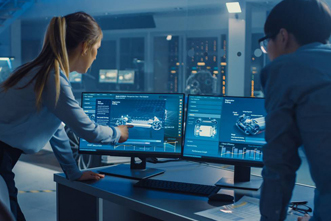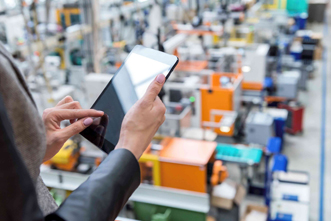With the introduction of profound changes to vehicle experiences, new technologies are transforming the entire automotive industry. As vehicles are becoming increasingly integrated with the connected environment, connectivity stands as the central force to driving this transformation.
However, building and delivering these services require an extensively reliable infrastructure which is a time-consuming and costly project. One should have great experience in OEMs.
To make this entire process faster and affordable, Microsoft has come up with tools and services that transform the connected vehicle experience. Check out how to use connected vehicles to promote mobility through Microsoft’s transportation solution services.
Mobility as a Service (Maas)
MaaS also known as TaaS (Transportation as a Service) is about people getting to goods and services and offering the same goods and services to other people. To understand MaaS offerings, let’s take examples of air taxis, autonomous drone fleets, and much more.
Completing a single trip of a person or goods make the further requirement of passenger-owned vehicles, ride-hailing, ridesharing, etc. Services offered through the different modes of transportation will be the key to make this natural.
Have a look at how Microsoft Azure Cloud has brought innovations in Automotive industry solutions.
- Quantum Algorithms to enhance traffic congestion in Ford Cars.
- Partnership with TomTom to deliver smart traffic-based routing.
- Partnership with AccuWeather for current or future weather reports.
- Merging the routing methods to make them available within Azure Maps and API.
Connecting Vehicles to the Microsoft Azure Cloud
Taking advantage of the navigation intelligence, connected vehicles can deliver outstanding mobility experiences with integration to the cloud.
The reporting of basic telematics is over-the-air updates and will become the key to delivering a market-competitive vehicle. It will also enable people to command and control the cars through mobile phones.
To deliver smart technology to the passionate car owners, the integration of in-vehicle infotainment (IVI) with voice assistants is a great way to go. It blends the different vehicle experiences with AI models to promoted automated driving levels.
From Cloud to Vehicles and Phones
Are you wondering what’s the right way to connect your vehicle and phone to experience the best?
Well, projecting to the IVI system of the vehicle is one smart approach. But most people believe that the vehicles should deliver great driving experiences without needing to connect with phones.
On the other hand, connecting vehicles with phones enable ride-sharing details, speed and location details, and connectivity for vehicle electronics.
Here, bringing 5G would have significant impacts. People would be able to use smart devices and machines more and more. They can harness the power of enhanced connectivity, machine learning, data analytics, and sensor technology.
Microsoft plans to enable 5G at the edge through cloud partnerships with enhanced security and developer experience. With the Microsoft Connected Vehicle Platform (MCVP), Microsoft offers a platform that can build customer-facing solutions.
It helps companies to fasten the delivery of digital services across vehicle procurement. The two-way network connectivity can play a major role in this. Being built on Microsoft Azure, MCVP includes the hyper-scale, global availability, and regulatory compliance that comes as part of Azure.
If you are looking forward to implementing Azure IoT transportation solutions, join hands with Narola Solutions. Our experts will guide you through the Azure Cognitive Services and Dynamics 365 ERP solutions for the Automotive industry.





